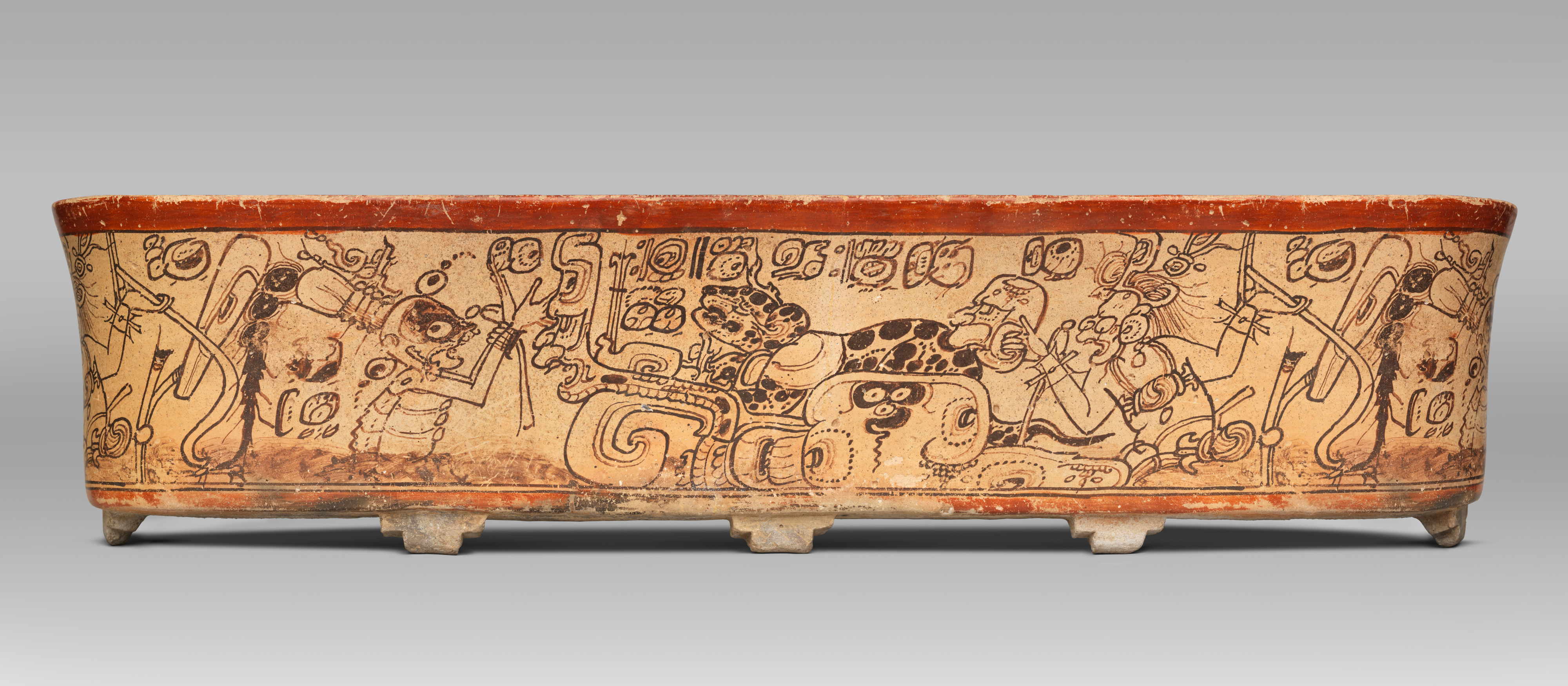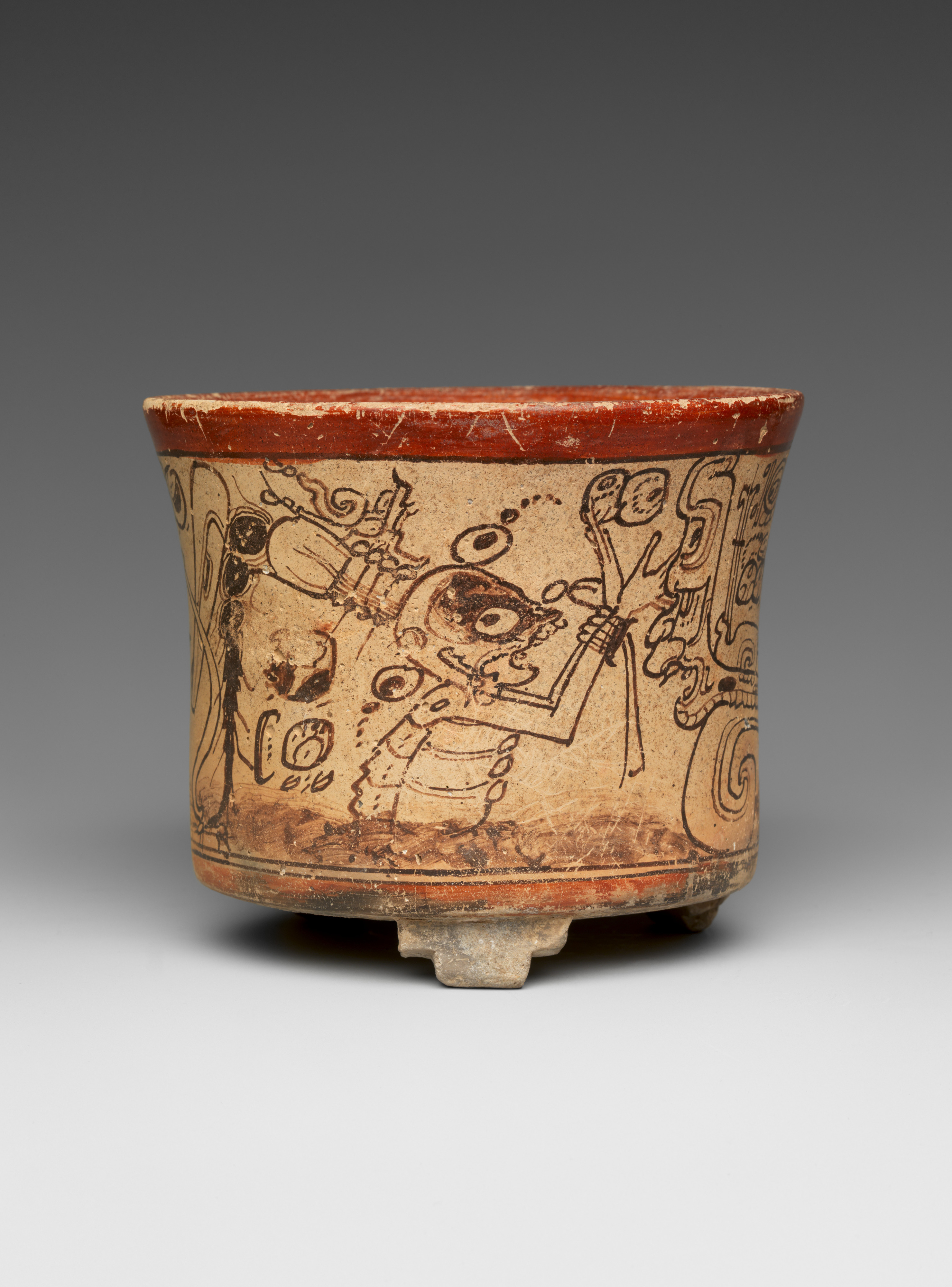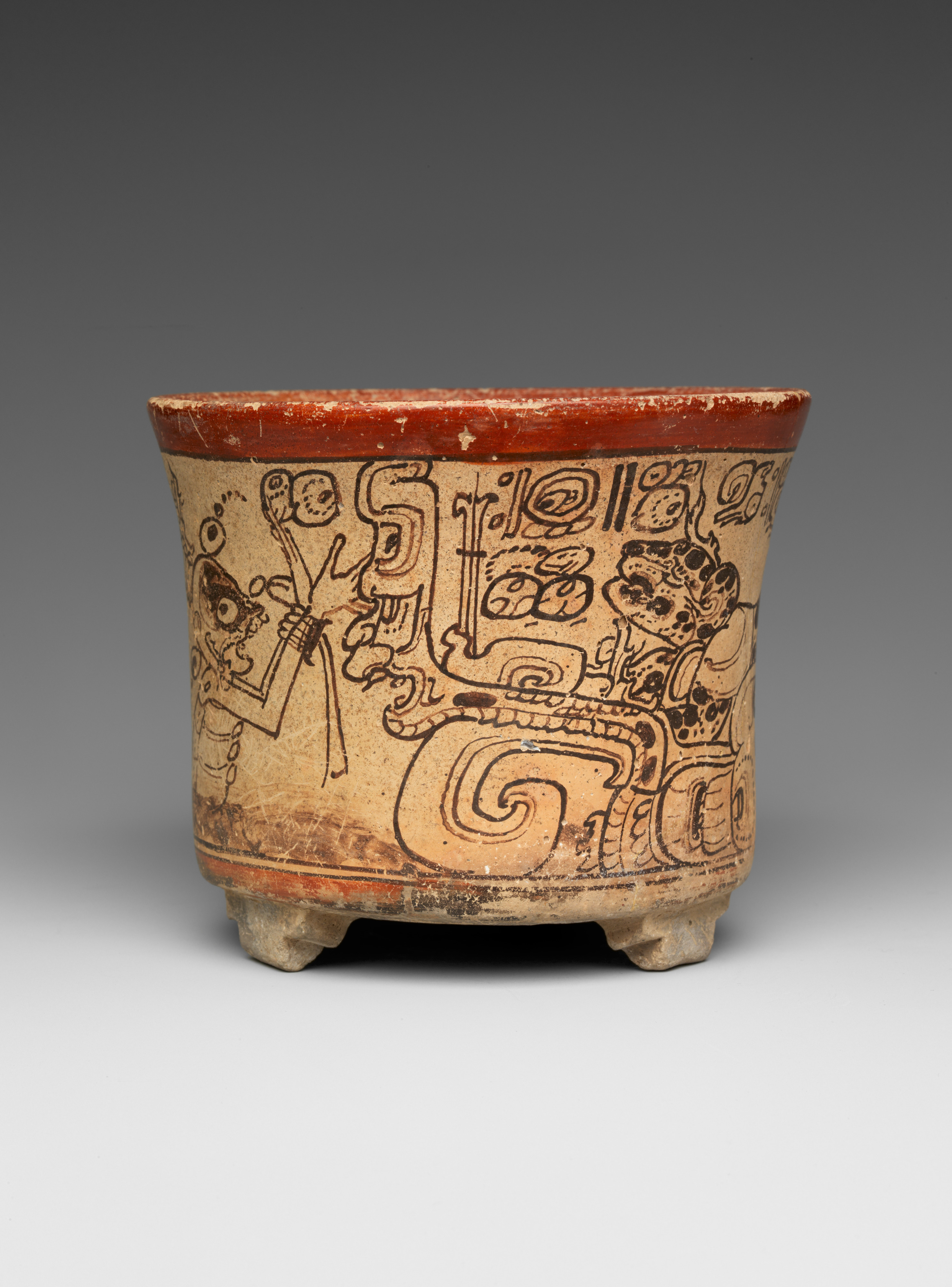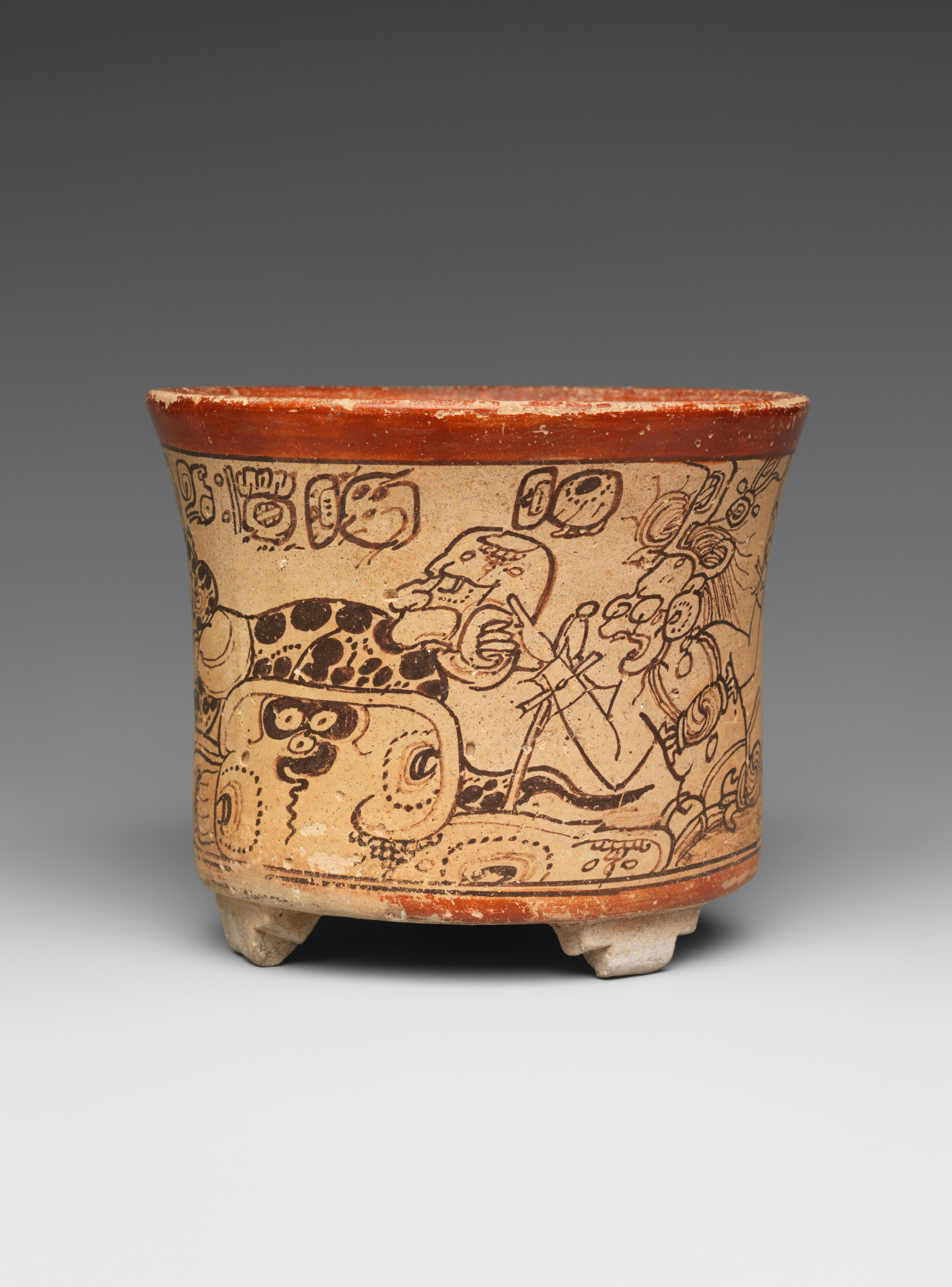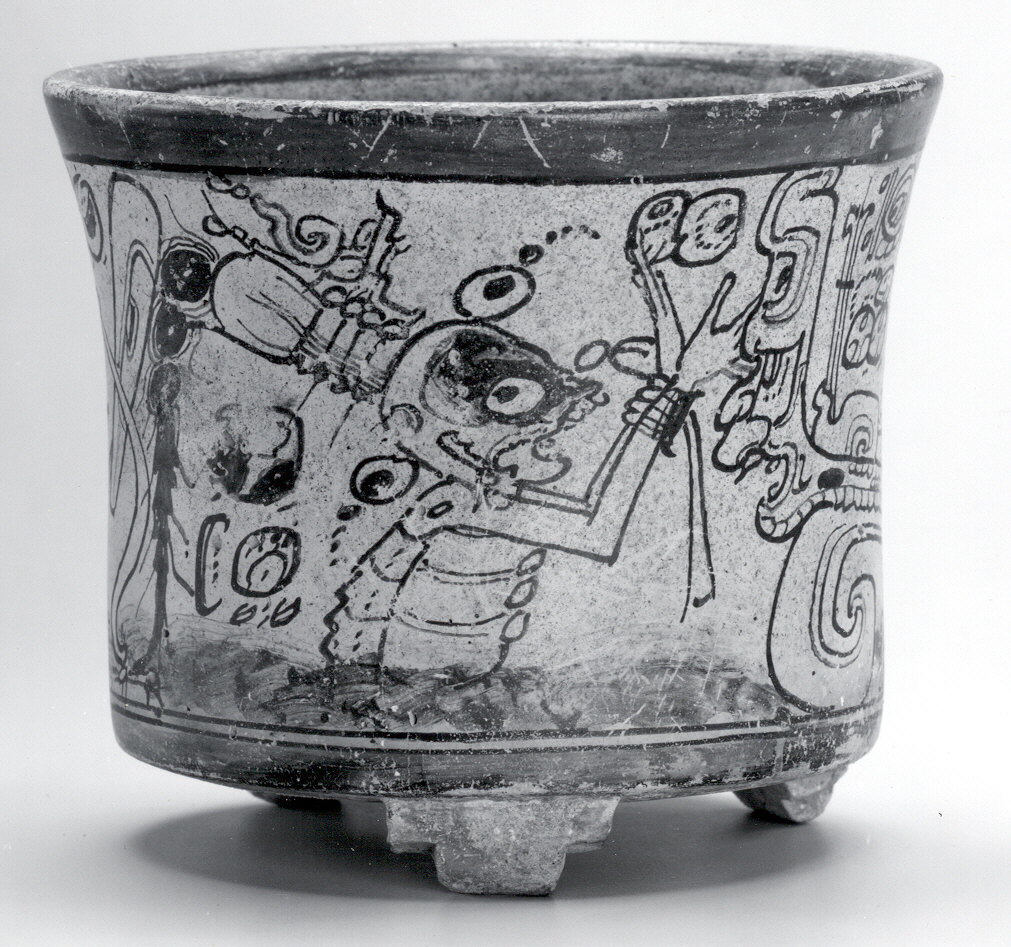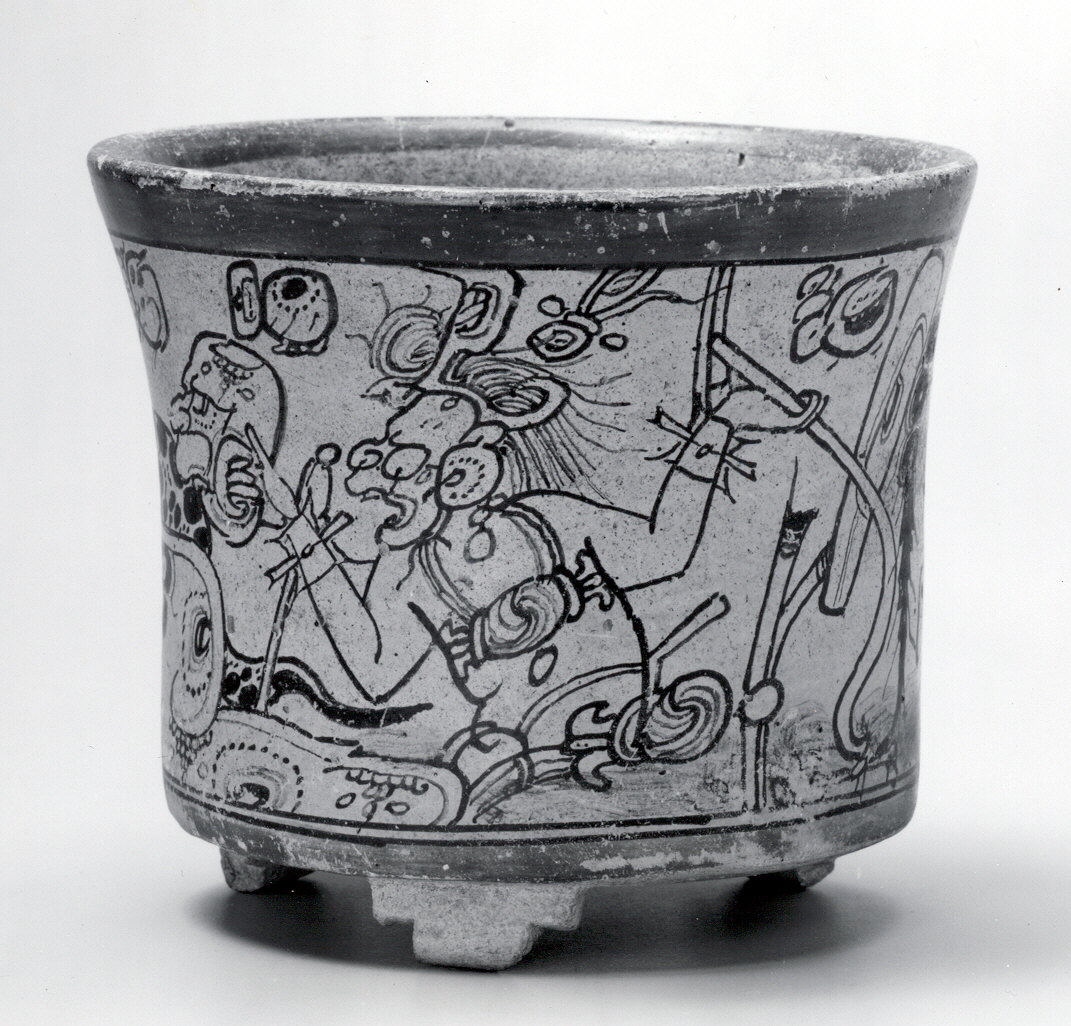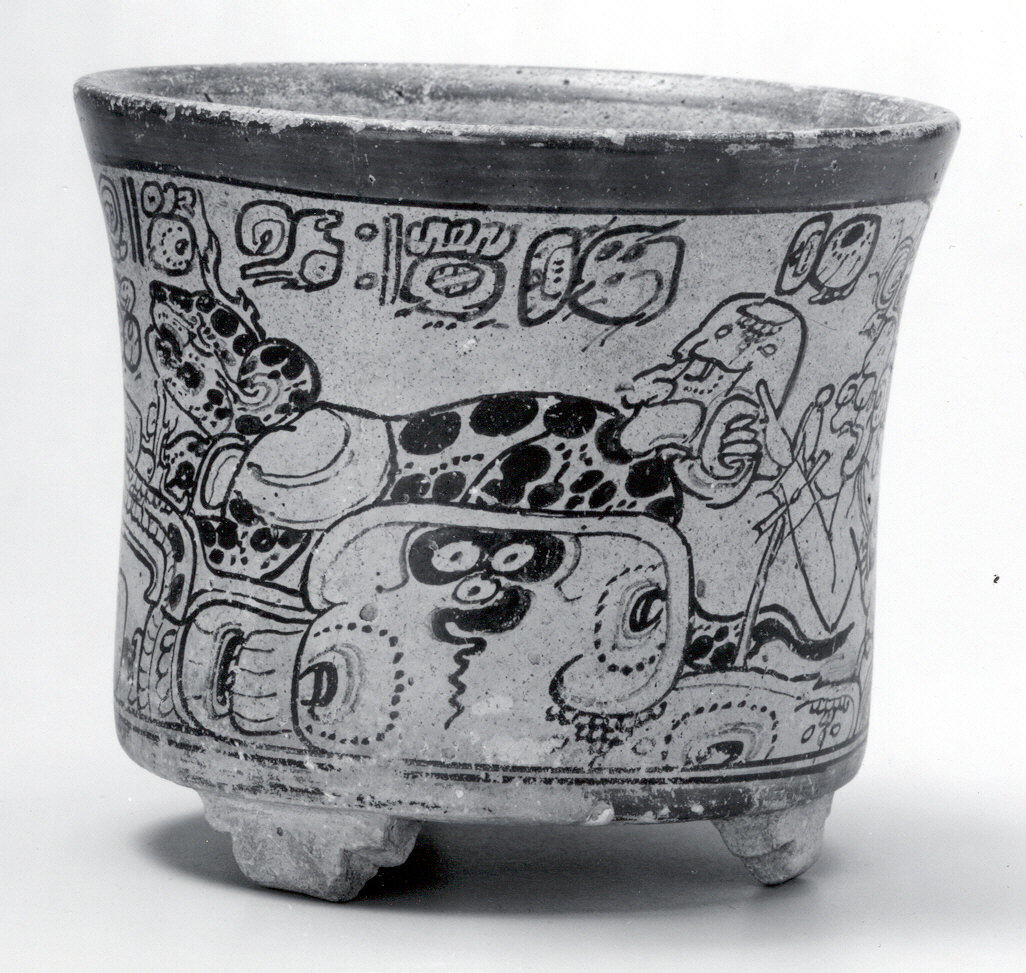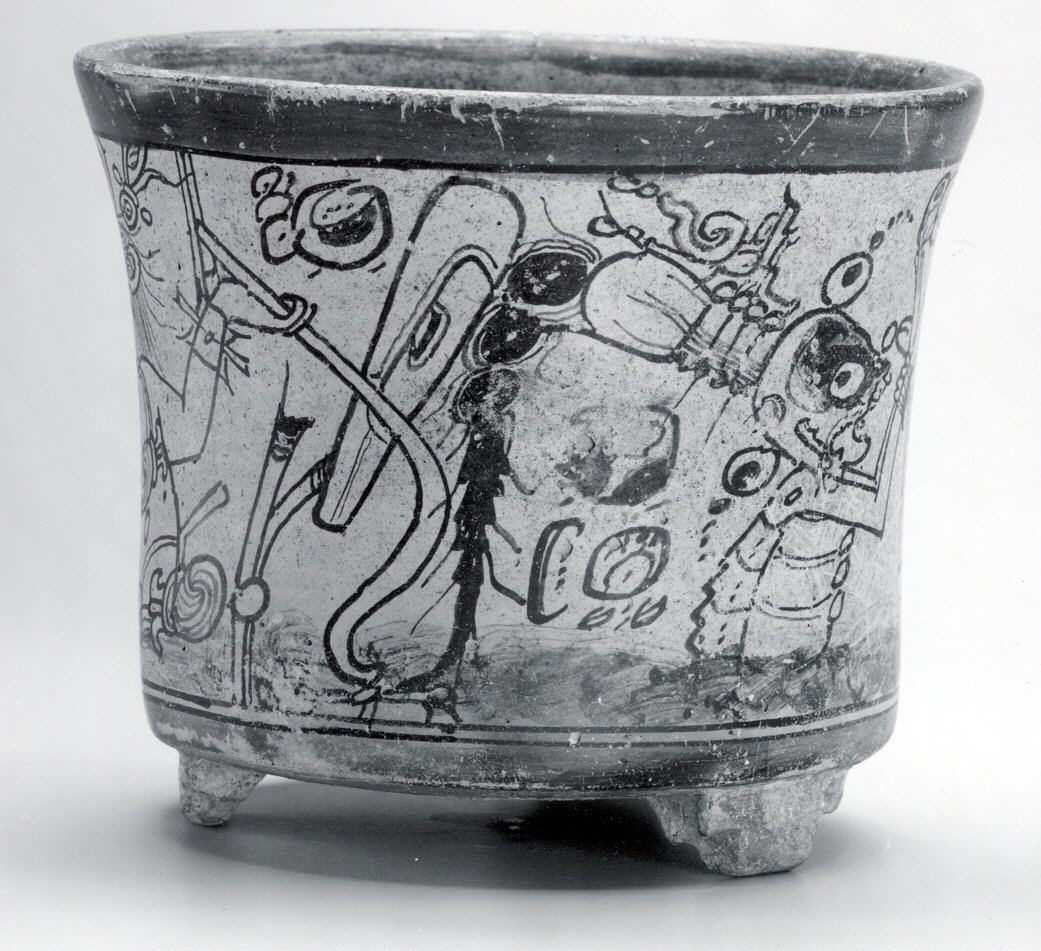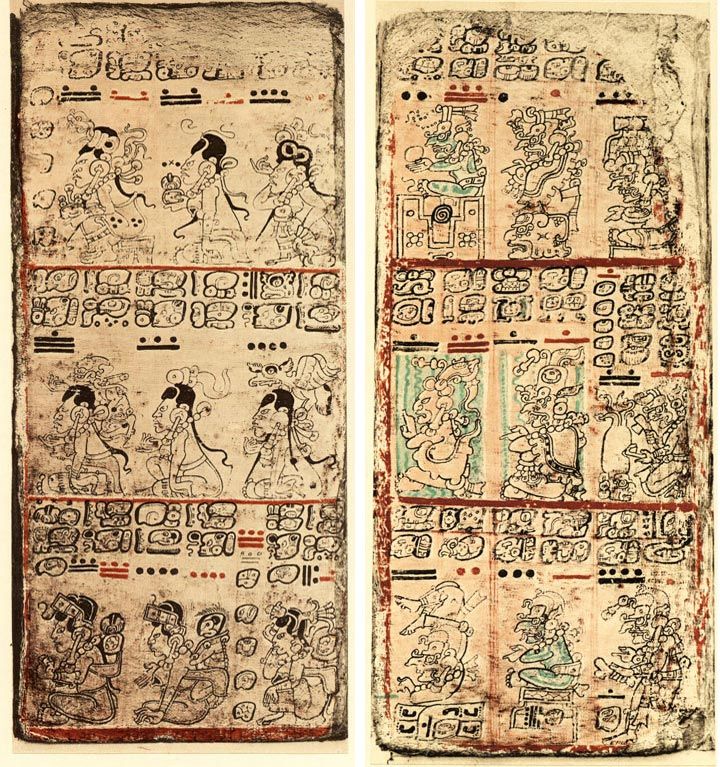Vessel with mythological scene
Attributed to the Metropolitan Painter
Not on view
This small drinking cup with stepped tripod supports features one of the most masterfully painted, well-preserved mythological scenes found on a Maya vessel. Because of the calligraphic line’s resemblance to that found in the three Maya books known as codices (sing. codex), this class of painted vases are referred to as "codex-style." Only four Maya codices have survived from what was certainly a large corpus, but these codex-style vessels afford a glimpse into the rich world of painted narratives and complex Maya mythologies about agricultural cycles. The subject of this particular vessel is a myth pertaining to the start of the tropical rainy season.
The black-on-cream painted scene, framed by vivid red bands on the flaring rim and the base, centers on an anthropomorphic feline marked with dark spots. This "water lily jaguar," a character known from other depictions and hieroglyphic texts, crouches on a large image of an animate mountain, known as witz in various Mayan languages. The jaguar wears a white cape and delicate vegetation sprouts from both his head and front paw.
To the jaguar’s right, Chahk, the ancient Maya rain god, wields a large axe marked with the hieroglyphic symbol for shiny objects in his left hand, and an animate stone object in the shape of a skull in his right. He actively addresses the jaguar on the mountain, perhaps in a menacing attack, or perhaps in a celebratory dance. Chahk is shown with his typical knotted hair and vegetal headdress, marine shell earrings, a pectoral perhaps made of knotted cords, and fish-like mouth with one projecting frontal tooth. Furthermore, the hieroglyphic text specifies that this is the Chahk of the "First Rain," setting the scene in the start of the rainy season of the Maya Lowlands from May to June. Rather than shrinking down the characters to show their full bodies, the artist chose to cut off the depictions at the waist. A smudgy border on the bottom of the scene may denote the fact that this action takes place in a smoky or watery location, possibly a low-lying area flooded by the early rains.
The other personage to the left of the water lily jaguar is a dancing death god, who interacts with a supernatural serpent emerging from the mountain. This death deity is depicted as both skeletal, with a humanoid cranium topped with two extruded eyeballs and black face paint, and insect-like, with the torso segmented like the body of a centipede and a similarly segmented headdress element. He raises his hands as if to beseech or threaten the jaguar, who faces him. A tasseled jewel emerges from the death god’s nostril, representing an actual nose ornament, or perhaps representing breath. A hieroglyphic caption directly to the left of this character’s body likely contains a logogram for his name (the damaged glyphic head with black face paint) and states that "it is his wahy," or co-essence. This phrase of wahy possession likely refers to the vessel’s owner, who some have argued was a royal youth, although the child’s specific dynasty is not explicitly named. These wahy beings are often personifications of death, disease, and other unsavory aspects of the Maya cosmos. With its blackened eyes, this particular being might be related to the anthropomorphic deity Akan, associated with decapitation and drunken abandon.
The scene here is not fully understood, but represents one variation of a theme depicted on several other codex-style vessels in public and private collections. Sometimes the rain god is shown with a human face, sometimes the death god has the distended belly of a corpse, and sometimes the anthropomorphic jaguar is shown as an infant on its back, such as in the Metropolitan Museum’s "Baby Jaguar" vessel (1978.412.206). In other scenes the protagonists are accompanied by creatures of the night, such as fireflies, toads, dogs, or other deities. The artists painting these vases might be showing different scenes in a larger narrative, or the same scene depicted in very different ways.
The function of this small cup would have been to hold an individual serving of a maize-based beverage or a chocolate drink. Most codex-style pots are found as offerings in funerary contexts, including an example from Tomb 1 excavated at the site of Calakmul, Campeche, Mexico. Recent work at Calakmul has revealed many codex-style fragments of popular themes, such as the one shown here, scenes of the rebirth of the maize god, and various activities of other aged gods that represent ancestral characters.
Further Reading
Barrois, Ramzy R. and Alexandre Tokovinine
2005 El inframundo y el mundo celestial en el Juego de Pelota Maya. In XVIII Simposio de Investigaciones Arqueológicas en Guatemala, 2004 (edited by J.P. Laporte, B. Arroyo, and H. Mejía), pp.27-38. Museo Nacional de Arqueología y Etnología, Guatemala.
Brittenham, Claudia and Debrah Nagao
2014 Cacaxtla Figural Ceramics. Anales del Instituto de Investigaciones Estéticas. vol. XXXVI, núm. 104, pp. 55-96. Instituto de Investigaciones Estéticas. Distrito Federal, México.
García Barrios, Ana
2008 Chaahk, el dios de la lluvia, en el period Clásico maya: aspectos religiosos y politicos. Unpublished Ph.D. Dissertation, Department of Anthropology of America, Universidad Complutense de Madrid.
Griffith, Cameron S., and Sarah M. P. Jack
2005 Monumental Modified Speleothem Sculpture: New Patterns in a Class of Ancient Maya Cave Art. In Making Marks: Graduate Studies in Rock Art Research at the New Millennium. Jennifer K.K. Huang and Elisabeth V. Culley, Editors. American Rock Art Research Association. pp. 1-25.
Keener, Candis Michelle
2009 The Baby Jaguar Series: A Comparative Analysis. Unpublished Master’s Thesis. Kent State University.
Kerr, Justin and Barbara Kerr.
1988. Some Observations on Maya Vase Painters. In Elizabeth P. Benson and Gillett G. Griffin, eds., Maya Iconography, pp. 236-259. Princeton, NJ: Princeton University Press. - See Fig. 7.11d, p. 251:
Lacadena, Alfonso, and Soren Wichmann
2004 On the representation of the glottal stop in Maya writing. In The Linguistics of Maya Writing. Edited by Soren Wichmann. Salt Lake City: University of Utah Press. pp. 103-162.
Looper, Matthew
2009 Lightning Warrior: Maya Art and Kingship at Quirigua. Austin: University of Texas Press. p. 87, Fig. 3.13
Robicsek, Francis and Donald Hales.
1988. The Sacrifice of Xbalanque. In Elizabeth P. Benson and Gillett G. Griffin, eds., Maya Iconography, pp. 260-276. - See p. 269, Fig. 8.11 for black and white rollout:
Robicsek, Francis and Donald Hales.
1981. Maya Book of the Dead: The Corpus of Codex Style Ceramics of the Late Classic Period . Charlottesville, VA: University of Virginia Art Museum and Norman, OK: University of Oklahoma Press. - For black and white rollout photograph, see Vessel 27, p. 24; for description, see pp. 41-42; for color rollout photograph, see interior front cover
Van Akkeren, Ruud
2012 Bebé jaguar como pelota: Nueva contribución a un tema Clásico Maya. In XXV Simposio de Investigaciones Arqueológicas en Guatemala, 2011 (edited by B. Arroyo, L. Paiz, and H. Mejía), pp. 698-713. Ministerio de Cultura y Deportes, Instituto de Antropología e Historia y Asociación Tikal, Guatemala.
James Doyle
Due to rights restrictions, this image cannot be enlarged, viewed at full screen, or downloaded.
This artwork is meant to be viewed from right to left. Scroll left to view more.


